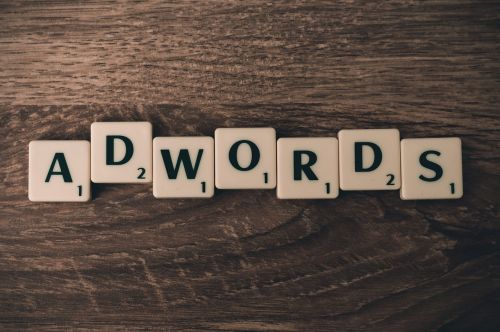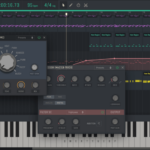AdWords Management Services – The ROI Ticker
AdWords management is the best tool to get the best return from campaigns. The entire process of strategic keyword research, increasing conversion rates, maximising PPC budget, generating more revenue and page optimisation is taken care of.
Why invest in AdWords management services?
AdWords is a method of a quick and easy way to generate high-quality traffic to a website. Pay-Per-click (PPC) advertising is an instant online presence. The technique helps to create profitable results quickly. AdWords management services are the ideal solution. Through careful research and strategic keyword choices, profitable PPC campaigns that generate a 10x return is attainable.
When it comes to pay-per-click campaigns, most people don’t know where to start. Choosing several keywords and putting together an advert without really understanding the strategy won’t help one in any way. In contrast, this leads to low conversion rates and poor returns. Consequently, it results in just a waste of time and money. Hence an experienced AdWords agency becomes the key to avoid the pitfalls.
Machine learning improves PPC advertising
The key source to take the maximum out of PPC campaign management is Google Ads’ machine learning capabilities. Likewise, the feature of smart bidding comes to aid when one organises a campaign. This helps one to optimise campaigns by maximising clicks, impressions and conversions on autopilot. PPC advertising is the secret of many brands’ online marketing strategies.
Google’s smart bidding options are the smartest way to bid in the current scenario. It is available via Google Ads, which offers an easy way to see the campaign results. As of now, Google Ads provides five smart bidding options, and this is how these features improve PPC advertising.
Target return on ad spend (ROAS)
Target ROAS lets one maximise the value of campaigns. It also estimates how much revenue for each dollar spent on PPC advertising will get. Google Ads campaign set bidding for cost-per-click campaigns after inputting the Target ROAS.
Target cost per acquisition (CPA)
For PPC advertising campaigns, advertisers can set a target goal for cost per acquisition (CPA) to achieve through Target CPA. Google’s smart bidding algorithm can achieve conversions at an average price equal to or less than the target CPA through this feature. The method becomes handy to grow sales without overspending.
Target impression share
Brands increase the number of search ad impressions they receive to generate demand and awareness for a brand and its services. The ads are effective in helping to gain new leads. Target impression share bidding optimises bids to maximise ad impressions on the SERPs.
A smart bidding strategy lets one select ad shown at the “absolute top” of the search results page. As target impression share bidding is on real-time data, it overrides the bid adjustments from manual campaigns. The only exception is to turn off mobile bidding.
Maximise clicks
Just like target impression share, choosing to maximise clicks as a smart bidding parameter is not only about increasing conversion rate. Google is responsible for adjusting bidding to get as many clicks within the average daily budget parameters with maximising clicks feature. Increasing traffic is a source of collecting data for future campaigns.
This method helps in the transition to Target ROAS or Target CPA bidding. Along with that, increased traffic strengthens one’s branding. Maximise Clicks campaigns are similar to the target share campaigns and are more based on awareness and leads than actual sales.
Maximise conversions
Maximise conversions is a great smart bidding option for conversion-focused digital marketers. The bidding strategy draws from a mix of historical data and contextual cues. Thus, the feature optimises ad placements. Maximise conversions is not on acquisition costs and more on volume, highly recommended for a small budget.
The strategy, however, doesn’t account for ROI. It seeks to spend the total available budget to achieve the maximum number of conversions possible. The cost per acquisition or daily pay increases and makes this option less than ideal if you closely track those metrics.
Three critical PPC trends in 2021
A new set of PPC trends will generate more leads and conversions in 2021. After the havoc caused by 2020, 2021 seems to be promising. At least for PPC and here are 3 of them to incorporate:
- Google’s ad data hub is the new gold mine of the year
Google announced that they’d stop allowing third-party pixel tracking because of security concerns in 2020, leading Google to invest in Ads Data Hub. The custom analysis aligns data with specific objectives while maintaining privacy and security. Marketers get a comprehensive study to measure the effectiveness of the ads across different screens. The ads data hub is undoubtedly a gold mine for marketers. It gives specific insights into customer behaviour and their interaction with ads.
- Understanding the buyer’s journey
How customers behave to ads is the critical research source for a PPC campaign. Keeping track of buyer’s journeys helps in creating a more effective PPC campaign.
- Automation will play a crucial role
Automation is the game-changer trend in 2021. With AI and machine learning (ML), advertisers automate labour-intensive tasks of finding the right place to display ads. It will also play a crucial role in testing ads.
The five stages of the customer’s buyer’s journey
Stage #1: Awareness
Customers learn about the business in this stage. Helping buyers figure out their needs and align offers accordingly is the first step towards a successful PPC. Branded paid ads, keywords in their search queries are the way to stir curiosity in the buyers.
Stage #2: Exploration
The customer gets accustomed to their problems. They consider one’s services as one solution and maybe check out reviews and previous partnerships to better understand the brand.
Stage #3: Comparison
The customer finds the best fit for themselves after comparing different offerings. Embedding a “cookie” through ads keeps one’s brand in front of the customer.
Stage #4: Conversion
In this stage, the customer has done all the research and is ready for the purchase. A solid CTA will compel customers to purchase from one.
Stage #5: Re-engagement
Using remarketing ads to attract attention for other products and services is the purpose of this stage.
AdWords management services are the key sources of yielding maximum returns from campaigns. It is a great way to optimise traffic by building strategic and successful campaigns.
Cover Image by NeedPix
















